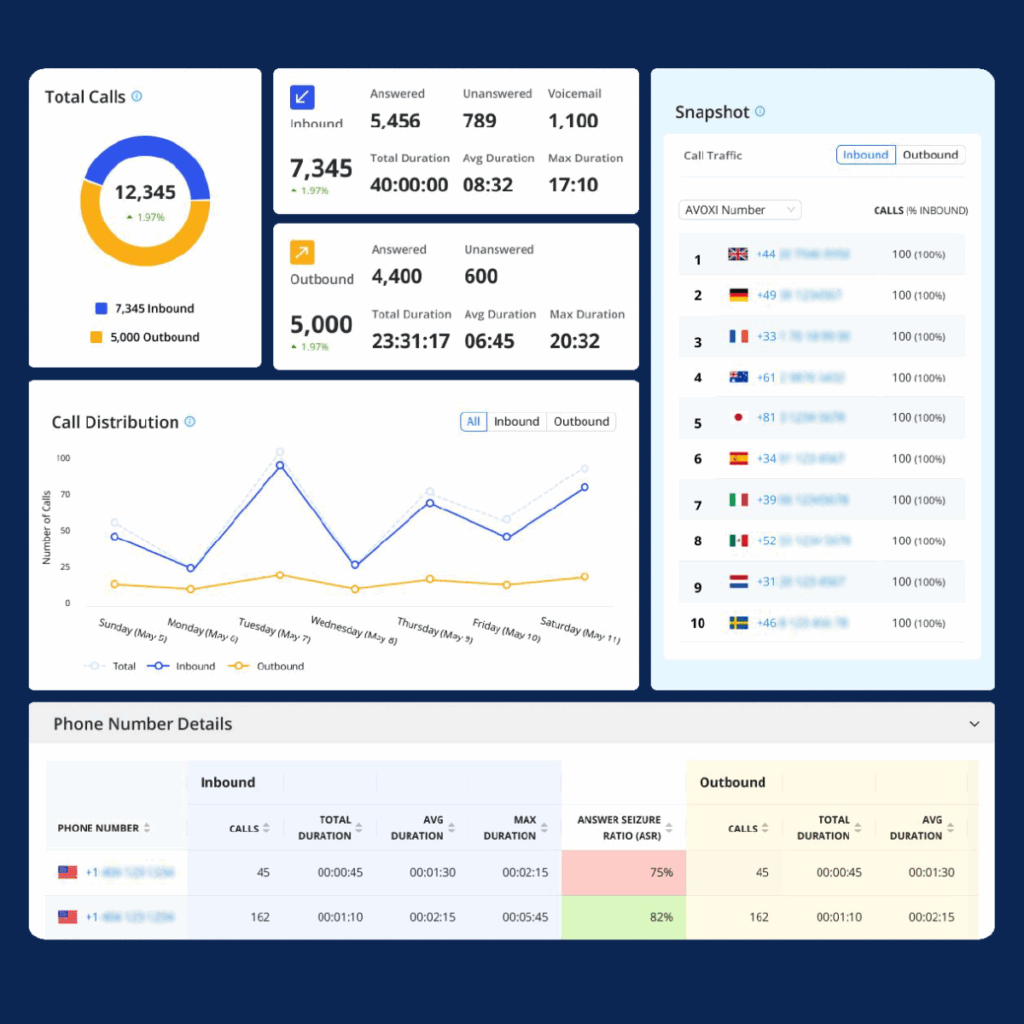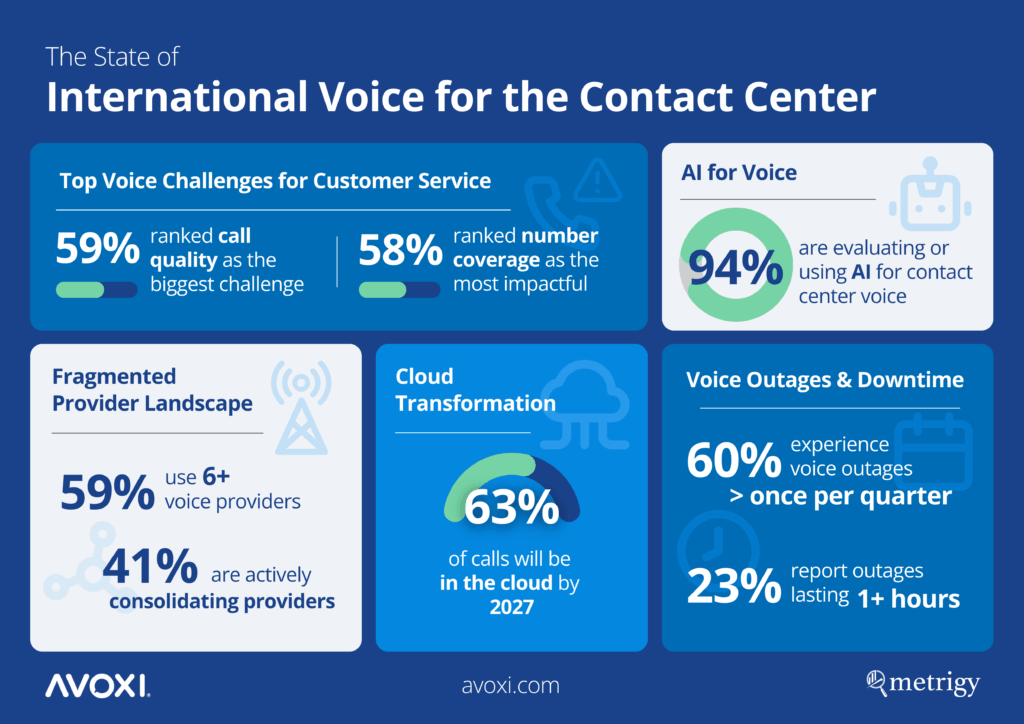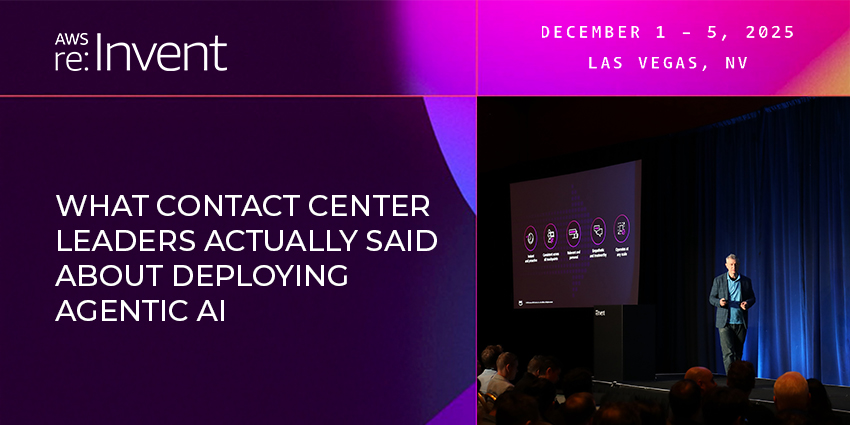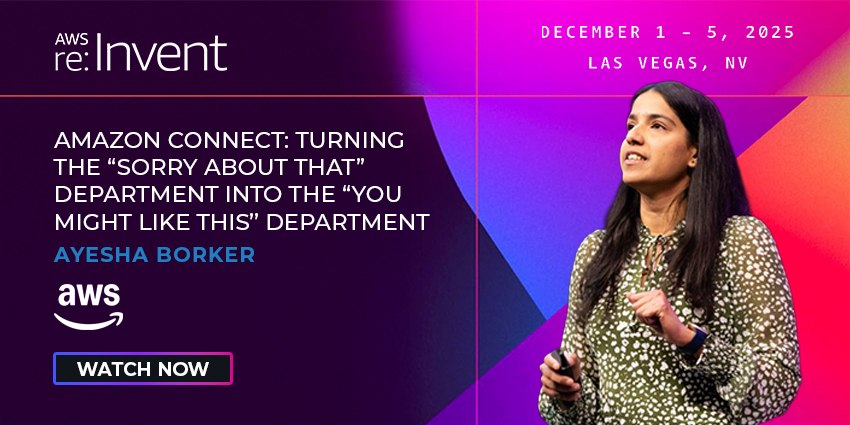For years, the narrative in customer experience has been that digital will displace voice.
Messaging apps, web chat, and AI-powered bots were expected to handle the bulk of customer interactions, leaving the phone call as a relic of the past.
Think what Netflix did to Blockbuster, Spotify did to CDs, and WhatsApp did to the SMS inbox.
But the reality is quite different.
Research from AVOXI and Metrigy shows that not only is voice holding steady, but it also remains the most widely used channel in the contact center. What’s changed is the nature of those conversations.
Routine questions are increasingly deflected to self-service or digital channels. That leaves the phone to carry higher-value, higher-stakes interactions: urgent issues, complex requests, and sensitive conversations where trust is on the line.
For example, a major global hospitality brand has seen its inbound call average rise from two minutes to over six minutes in the past few years.
Why? Because customers book simple reservations online but still pick up the phone when the situation is nuanced, whether that be changing a multi-leg booking, requesting specific accessibility features, or handling a sensitive personal requirement.
In short: the phone isn’t just still ringing; it’s ringing for the moments that matter most.
The Legacy Hangover
Despite the continued popularity of telephony in the modern contact center, many organizations are still running voice infrastructure like it’s the 1990s.
Historically, expanding into a new region meant leasing offices, signing local carrier contracts, installing PBXs, and stitching together gateways.
Decades later, some enterprises are still juggling this patchwork of systems, contracts, and invoices.
Meanwhile, the rest of the stack – from servers to applications to contact center platforms – has shifted to the cloud.
Unfortunately, voice often remains the outlier, leaving CX leaders with limited visibility, inconsistent quality, and mounting operational costs.
A Cloud-Native Future for Voice
However, while some organizations might be stuck in the past, the industry as a whole is seeing a decisive push to bring voice into the same cloud-native, software-defined model that transformed the rest of enterprise communications.
This shift enables businesses to:
- Centralize and simplify global voice management.
- Gain visibility and control over call routing and quality.
- Integrate natively with CX platforms and AI systems.
- Adapt dynamically to changes in customer demand or business priorities.
Companies like AVOXI have emerged as part of this movement, building voice infrastructure into their software from the ground up. Rather than bolting APIs onto legacy telco networks, their approach treats voice as software orchestrated, agile service layer.
Two of AVOXI’s major enterprise customers – Flutterwave and ENGIE – recently transitioned to cloud voice and are taking this software-led approach to managing the voice channel.
By consolidating on the AVOXI platform, both firms have upgraded their customer service number inventory to more effectively connect service teams with customers globally, streamlined IT operations. and improved voice quality.

From Reactive to Proactive
One of the more significant changes in voice infrastructure is the move from reactive support to proactive monitoring.
Traditionally, telecom has operated on a break-fix model: a customer experiences jitter or dropped calls, raises a ticket, and waits for resolution.
AVOXI’s recently launched Proactive Service flips this model.
By applying machine learning at the phone-number level, the platform can detect anomalies and act on them automatically before they impact a customer.
In early deployments, the system has preempted issues nearly every time – dramatically reducing the number of tickets enterprises need to raise and freeing teams to focus on strategic improvements rather than firefighting.
AVOXI CEO, Barbara Dondiego, explained that, since launching Proactive Service, the company has “identified issues before the client 97% of the time.
“That has significantly reduced support tickets and allowed our teams to have more strategic conversations with customers.”
Preparing Voice for the AI Era
Looking ahead, enterprises must also recognize that voice infrastructure needs to evolve for AI. Human agents can adapt to slight delays or jitter, but machine-to-human interactions – whether via agent assist tools or fully automated AI calls – demand near-perfect quality and minimal latency.

Industry leaders are already developing benchmarks for this new environment, ensuring that voice is not just ‘good enough’ for humans but optimized for AI-driven CX.
Voice is no longer the utility in the background of customer service; it is the channel where complex, emotional, and business-critical interactions converge.
Modernizing voice by moving it to the cloud, embedding intelligence, and preparing it for AI, is now central to any enterprise CX strategy.
Because in the moments that matter most, customers still pick up the phone. And enterprises can’t afford to let them down.
You can learn more about AVOXI’s approach to voice and discover the company’s full range of products and services by visiting the website today.







